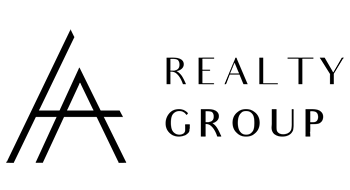A Surge in Inflation Concerns 62% See Impact on Daily Expenses – current events today and Expert Ana
- A Surge in Inflation Concerns: 62% See Impact on Daily Expenses – current events today and Expert Analysis on Navigating Financial Uncertainty.
- Understanding the Drivers of Inflation
- The Impact on Consumer Behavior
- Regional Variations in Inflation’s Impact
- The Role of Government and Central Banks
- Long-Term Strategies for Inflation Resilience
- The Impact of Inflation on Investment Strategies
- Future Outlook and Potential Scenarios
A Surge in Inflation Concerns: 62% See Impact on Daily Expenses – current events today and Expert Analysis on Navigating Financial Uncertainty.
The economic landscape is currently dominated by increasing inflation rates, a pressing concern for a vast majority of consumers. Recent surveys indicate that 62% of individuals are already feeling the pinch of rising costs on their everyday expenses, shaping their purchasing decisions and prompting a reevaluation of household budgets. This situation, influenced by global supply chain disruptions and heightened demand, presents a complex challenge for both individuals and policymakers, making understanding these trends and potential solutions critical in today’s economic climate as reflected in the news today.
Understanding the Drivers of Inflation
Several factors are converging to create the current inflationary environment. Supply chain bottlenecks, a lasting effect of the pandemic, continue to restrict the availability of goods, pushing prices upwards. Simultaneously, strong consumer demand, fueled by stimulus measures and pent-up savings, is exacerbating the imbalance. This dynamic is particularly evident in sectors like energy, food, and housing, where price increases are being keenly felt by consumers. The interplay of these forces requires a nuanced understanding to develop effective economic strategies.
Furthermore, geopolitical events, such as the ongoing conflict in Ukraine, have introduced additional volatility into the global market, particularly in energy and food supplies. These disruptions have led to further price increases and supply challenges worldwide. Central banks are responding with measured interest rate hikes to subdue demand and curb inflationary pressures, but the timing and pace of these increases are critical to avoid triggering a recession. The delicate balance between controlling inflation and sustaining economic growth is a significant hurdle for policymakers.
| Energy | 25.6% |
| Food | 10.8% |
| Housing | 4.2% |
| Transportation | 12.5% |
The Impact on Consumer Behavior
Consumers are demonstrably altering their spending habits in response to rising prices. Many are delaying major purchases, seeking out cheaper alternatives, and reducing discretionary spending. This shift in consumer behavior is impacting various industries, from retail to travel and entertainment. The demand for essential goods remains relatively stable, but discretionary spending is becoming increasingly sensitive to price fluctuations. Businesses are adapting by offering discounts, promotions, and private-label options to retain customers.
The rising cost of living is also prompting consumers to re-evaluate their financial priorities. Many are focusing on debt reduction and increasing savings to build a financial cushion against further economic uncertainty. Furthermore, the cost of borrowing is increasing as central banks raise interest rates, making it more expensive for consumers to finance purchases. This overall environment is leading to a cautious and conservative approach to spending and investment.
- Reduced discretionary spending
- Delayed major purchases
- Increased focus on debt reduction
- Greater demand for value and affordability
- Shift towards private-label brands
Regional Variations in Inflation’s Impact
The impact of inflation isn’t uniform across different regions. Areas heavily reliant on imported goods are experiencing more pronounced price increases due to higher transportation costs and supply chain disruptions. Similarly, regions with a significant proportion of low-income households are disproportionately affected, as essential goods constitute a larger share of their budgets. This regional disparity highlights the need for targeted policy interventions to support vulnerable communities. Understanding these localized effects is paramount for effective economic planning and resource allocation.
Furthermore, areas with strong housing markets are witnessing substantial increases in rental and property costs, adding to the financial strain on households. This is particularly acute in urban centers where demand consistently outpaces supply. Conversely, regions with more diversified economies and less reliance on global supply chains may be experiencing relatively milder inflationary pressures. These differences underscore the importance of considering regional contexts when formulating national economic policies. A one-size-fits-all approach is unlikely to be effective in addressing the complex challenges posed by inflation.
The challenges are significant, creating anxiety in the financial market and everyday households. It also prompts a search for tools and resources to help navigate these difficult circumstances. Individuals and families are seeking guidance on budgeting, investing, and coping with diminished purchasing power, fostering a growing demand for financial literacy and accessible advice.
The Role of Government and Central Banks
Government and central banks are playing a crucial role in mitigating the effects of inflation. Central banks are primarily focused on controlling inflation through monetary policy tools, such as raising interest rates and reducing the money supply. However, these actions can also have unintended consequences, such as slowing economic growth and increasing unemployment. Therefore, central banks are navigating a delicate balancing act, aiming to curb inflation without triggering a recession. Effective communication and transparency are crucial in managing expectations and maintaining credibility.
Governments can complement monetary policy with fiscal measures, such as targeted subsidies, tax relief, and investments in infrastructure to address supply chain bottlenecks. These measures can help to reduce costs and mitigate the impact of inflation on vulnerable populations. However, fiscal policies must be carefully calibrated to avoid exacerbating inflationary pressures. Responsible fiscal management and a commitment to long-term sustainability are essential for maintaining economic stability.
The interplay between monetary and fiscal policies is critical. Close coordination between central banks and governments is necessary to ensure that these policies are aligned and mutually reinforcing, creating a cohesive and effective response to the challenges of inflation.
Long-Term Strategies for Inflation Resilience
Addressing inflation requires not only short-term measures but also long-term strategies to build economic resilience. Investing in infrastructure, diversifying supply chains, and promoting domestic production can help to reduce dependence on external factors and mitigate the impact of future shocks. Furthermore, fostering innovation and technological advancements can boost productivity and enhance competitiveness, contributing to sustained economic growth.
Investing in education and skills development is also crucial. A skilled workforce is better equipped to adapt to changing economic conditions and drive innovation. Promoting entrepreneurship and small business development can create job opportunities and foster economic diversification. In addition, strengthening social safety nets can provide a cushion for vulnerable populations during periods of economic turbulence. A comprehensive and multifaceted approach is essential for building long-term economic stability and resilience.
- Diversify supply chains
- Invest in domestic production
- Promote innovation and technology
- Invest in education and skills development
- Strengthen social safety nets
The Impact of Inflation on Investment Strategies
Inflation significantly influences investment strategies. Traditional fixed-income investments, such as bonds, become less attractive as inflation erodes their real returns. Investors may seek alternative investments that offer inflation protection, such as commodities, real estate, and inflation-indexed securities. However, these options also come with their own risks and require careful consideration. Diversifying investment portfolios across different asset classes is crucial for managing inflation risk.
During periods of high inflation, investors often focus on companies with strong pricing power – those that can pass on rising costs to consumers without significantly impacting demand. These companies are better positioned to maintain profitability in an inflationary environment. Additionally, investors may consider investing in sectors that are less susceptible to inflationary pressures, such as healthcare and consumer staples. Strategic asset allocation and a long-term perspective are essential for navigating the complexities of an inflationary market.
It’s a challenging climate that requires particularly skilled financial planning. Those who struggle to adapt may experience difficulty safeguarding their financial future.
Future Outlook and Potential Scenarios
The future outlook for inflation remains uncertain. Several factors could influence the trajectory of prices, including geopolitical developments, energy market conditions, and the effectiveness of policy responses. It is possible that inflation will subside as supply chain bottlenecks ease and demand moderates. However, there is also a risk that inflation could become entrenched, leading to a sustained period of higher prices. Monitoring key economic indicators and staying informed about evolving market conditions is crucial for anticipating potential scenarios.
Scenario planning can help individuals and businesses prepare for different possibilities. By considering a range of potential outcomes, they can develop contingency plans and make informed decisions. A proactive approach, combined with flexibility and adaptability, is essential for navigating the uncertain economic landscape. Continuous assessment of risks and opportunities will be critical for making sound investment and business decisions.
Ultimately, navigating these economic waters requires a combination of careful planning, proactive monitoring, and a nuanced understanding of the complex interplay of global forces. Remaining informed and adaptable will be essential for both individuals and businesses in the months and years ahead.
| Inflation Rate (CPI) | 8.3% | Increasing |
| Unemployment Rate | 3.6% | Decreasing |
| GDP Growth | 2.6% | Slowly Moderating |
| Interest Rate (Federal Funds Rate) | 4.50% – 4.75% | Increasing |


